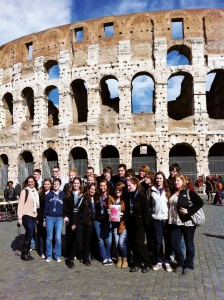Parents of students in the Sippican School community will have to wait longer for the proposed budget for the fiscal year 2013. But with the wait comes good news that was delivered to parents in an e-mail sent by Marion School Committee Chairman Brad Gordon earlier this week.
During a School Committee meeting on February 1, Gordon reported that the school would have to trim approximately $235,000 from their budget based on the preliminary numbers he was given. However, after receiving more accurate information from the town, he was pleased to announce that the budget cuts would only be $54,000 instead of $235,000.
“While still significant, this amount of budget reduction will have a far less dramatic impact on programs and staff at Sippican School than the earlier projection,” Gordon stated in the e-mail.
Heading into the new fiscal year, the school is facing a variety of problems including higher special education costs, tuition for students attending Bristol Aggie Vocational and Technical School and contractual increases to staff salaries. Despite the challenges, the committee hopes to be able to decrease the impact of the budget cuts on their students.
“While we are still focused on minimizing the impact of budget cuts on next year’s Sippican School programming, we are very pleased that those impacts will be far less than previously expected,” said Gordon in the e-mail.
Gordon knows how difficult it has been to make such a drastic decrease in the budget cuts, and is grateful to the cooperation and support he has received from various town officials during the process.
“We sincerely appreciate the efforts of the Marion Finance Committee, the Board of Selectmen and the town’s administrative staff for their hard work, cooperation and continuing support of Sippican School in these difficult financial times,” Gordon wrote in the e-mail.
The $235,000 budget cut proposal was slated to be presented at the March 7 School Committee meeting. However, given the new developments, a formal proposal for the $54,000 budget cut plan will be presented at the School Committee meeting on April 4 after the budget subcommittee meets with school administration. The meeting will be held at the Marion Town House at 6:30 pm.


